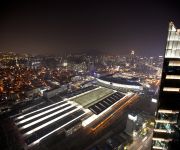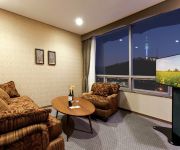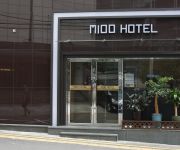Facts and Data
Webpages:
Official Unesco Page
Cultural Heritage Administration
Korea Tourism Organization
Basis Data:
Unesco World heritage since: 1995
Size of heritage: 19 ha
Coordinates:
Longitude: 126,983°
Latitude: 37,550°
Summary
Jongmyo is the oldest and most authentic of the Confucian royal shrines to have been preserved. Dedicated to the forefathers of the Joseon dynasty (1392–1910), the shrine has existed in its present form since the 16th century and houses tablets bearing the teachings of members of the former royal family. Ritual ceremonies linking music, song and dance still take place there, perpetuating a tradition that goes back to the 14th century.
Location on Map
Show bigger map on Openstreetmap
Introduction
Jongmyo Shrine is a UNESCO World Heritage site located in Seoul, South Korea. It is a sacred Confucian shrine that has been an important cultural and historical landmark for over six centuries. The shrine is renowned for its architectural beauty, historical significance, and its role in preserving the Confucian rituals and traditions of the Joseon Dynasty.
History
The construction of Jongmyo Shrine began in 1394 during the early years of the Joseon Dynasty, under the reign of King Taejo. It was built to honor the deceased kings and queens of the dynasty and to perform ancestral rituals. The shrine was expanded and renovated several times over the centuries, with the last major renovation taking place in 1608.
Jongmyo Shrine played a crucial role in the Confucian rituals of the Joseon Dynasty. The ancestral tablets of the kings and queens were enshrined here, and elaborate ceremonies were held to pay respects to the ancestors. These rituals were considered essential for maintaining the harmony and stability of the kingdom.
Architecture
The architecture of Jongmyo Shrine is a remarkable example of traditional Korean design. The complex is divided into several sections, including the Jeongjeon (main hall), Yeongnyeongjeon (hall of eternal peace), and the Jeonsacheong (royal kitchen). The buildings are constructed using wood and stone, with intricate detailing and elegant simplicity.
The Jeongjeon, the main hall of the shrine, is the largest wooden structure in Korea. It consists of 19 rooms, each dedicated to a specific king or queen. The hall is supported by 48 massive wooden columns, which are a testament to the advanced architectural techniques of the time.
Current State
Jongmyo Shrine remains an active religious site and is open to the public for guided tours. It is not only a place of worship but also a living museum that offers visitors a glimpse into the rich cultural heritage of Korea.
The shrine has been meticulously preserved and restored over the years to maintain its original splendor. The buildings and the surrounding gardens have been carefully maintained to ensure their authenticity. The meticulous restoration work has earned Jongmyo Shrine recognition as a UNESCO World Heritage site in 1995.
Today, Jongmyo Shrine attracts both locals and tourists who come to witness the traditional ancestral rituals that are still performed here. The shrine also hosts various cultural events and performances, providing visitors with a deeper understanding of Korean traditions and history.
Conclusion
Jongmyo Shrine stands as a testament to the rich cultural heritage of South Korea. Its historical significance, architectural beauty, and preservation of Confucian rituals make it a must-visit destination for anyone interested in Korean history and culture. As a UNESCO World Heritage site, Jongmyo Shrine continues to inspire awe and reverence, serving as a link between the past and the present.
Hotels and places to stay
Millennium Seoul Hilton
THE PLAZA Seoul Autograph Collection
Namsan Four Points by Sheraton Seoul
DAYS HOTEL SEOUL MYEONGDONG
Loisir Hotel MyungDong MyungDong
The Grand Hotel Myeongdong
Hotel Cozy Myeongdong Hotel Cozy Myeongdong
Loisir Hotel Seoul Myeongdong
Nine Tree Hotel Myeong-dong
Hotel MIDO Myeongdong 호텔미도
Videos from the area
Videos provided by Youtube are under the copyright of their owners.



















